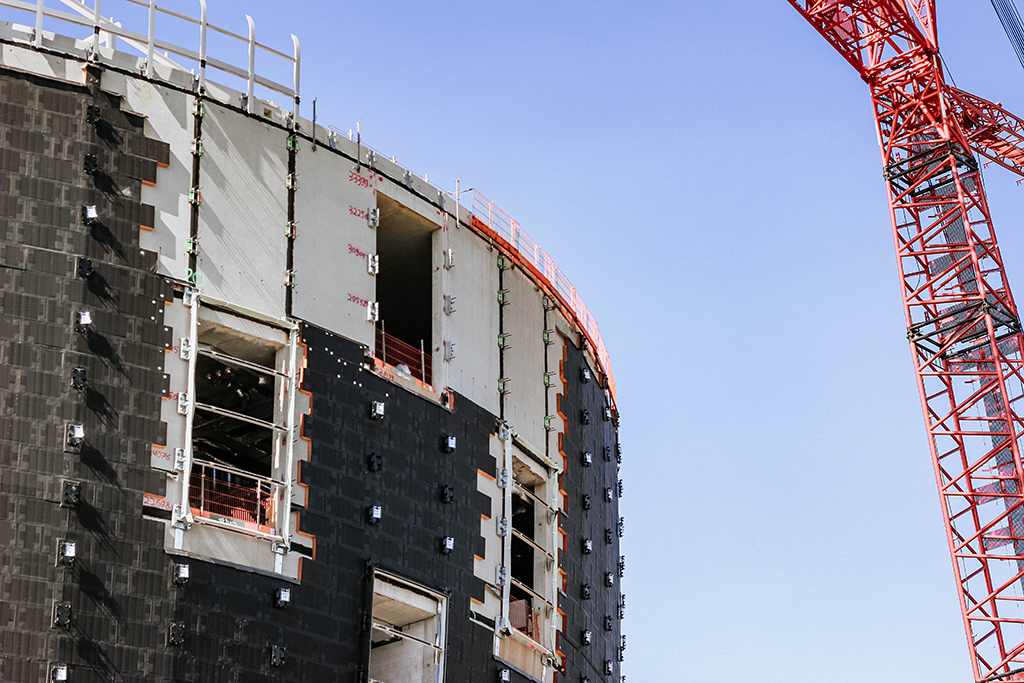Digitizing the Last Frontier

Digitization in the construction industry is only just getting started. There are two ways to read that. One way is that the digital revolution came and went and while seemingly every other sector reinvented and retooled their processes, construction did not, remaining one of the least digitized industries today. The second, far more truthful way, is less bleak. Recent trends are converging to create a complex digital disruption in the construction industry. The emergence of BIM and digital twins, lower computing and sensor costs, and increased venture capital investment are bringing the possibilities of a fully-digitized construction industry into reality. Imagine a production schedule that perfectly matches the delivery date; an initial budget equivalent to the real cost of construction; a building with no surprise change orders – we may consider these things a matter of course in ten years’ time. In my role at VIATechnik, I see hundreds of projects inching toward these goals every day – and we are only just getting started.
THE EMERGENCE OF BIM
The emergence of BIM creates a reliable source of truth for building data – highly-detailed, fully-digitized building models can now reflect the final built product with extreme accuracy. This “digital twin” of the building contains multitudes, from geospatial locations of building parts to wall assemblies to MEP data and more, that can be analyzed both during and after construction in a feedback loop to improve industrial practices. Their performance can be reliably modeled, tested, monitored, and adapted digitally in real-time. In other words, buildings are no longer black boxes of activity – they are wells of data that can be returned to time and again. Moreover, the accuracy of these models is such that an entire project can be coordinated digitally before a single scoop of dirt is excavated, thereby minimizing the number of site issues. At VIATechnik we work with our clients to achieve just this – by bringing together all the project stakeholders in Integrated Concurrent Engineering (ICE) sessions. For an oncology center in Texas, we created a fully-coordinated digital model that resolved design decisions, clashes, and trade sequencing. Each sub-contractor then used an iPad on site to reference the model – returning to the well, as it were – during each step of construction. In all, there were three field issues that needed to be resolved. Zero doesn’t seem so far off anymore.
THE LOW COST OF COMPUTING
In other fields, technological advancement is lowering the barriers to entry and the capital investment required to digitize the construction industry. The average cost of “Internet-of-Things” (IoT) sensors that monitor building systems is expected to drop 38% by 2020. Moreover, the cost of crunching this data is seeing similar rapid cost reductions to the tune of a 50% reduction in cloud computing costs every three years. Taken together with myriad other factors, it is clear the construction industry can no longer ignore the problems of analog processes on the basis of cost. New buildings are increasingly beginning with a digital model and being outfitted with IoT sensors during construction, allowing that model to be used in the daily operation of building systems. Existing building assets can now be rapidly digitized with BIM and monitored through cheap IoT sensors and analytics. We have known about the problem for some time; now it is cheap enough to solve.
LOOKING TO THE FUTURE
Combining these two trends – BIM emergence and outside technological advancement – reveals the complex disruption underway in the construction industry. According to Global Management Consulting Firm, Oliver Wyman, between 2010 and 2018, nearly 1200 startups formed in the real estate and construction industry, receiving a combined $19.4 billion in venture capital funding. In a way this is unsurprising; after all, in how many other industries can a $50 million project be considered small? Where the surprises will come is in the results. In the short term, many of these companies will fail, and spectacularly, but each failure will build toward larger long-term successes. The potential is simply too great for any other outcome.
The future is closer than you might think. Imagine a construction industry reshaped the way communication was reshaped by the iPhone – a digital foundation that spawned revolutionary advances in finance, transportation, even dating. BIM is already fulfilling this same role. Through 4-D and 5-D BIM applications, we are beginning to see changes in the construction management and general contracting spheres – time and cost can now be managed and analyzed in real-time time within the digital model. Outside of the construction industry, BIM is reshaping real estate development and the management of those portfolios. Working with developers, VIATechnik is automating the model creation for similar building designs such as retail spaces, industrial warehouses, and parking garages. With just a boundary box, a model can be generated and in turn analyzed for feasibility, cost, and other parameters enabling the developer to select sites easily and quickly and take advantage of trends in a traditionally slow-moving market. We are also working with developers to create aggregated BIM databases for hundreds of real estate assets, allowing them to query their entire portfolio instantly. Suddenly, it seems feasible that through real-time IoT data, that same real estate portfolio could be monitored for energy use.
Or that potential retrofits could be cost-estimated with extreme accuracy and their benefits simulated over time. We could even see BIM models of entire cities as these practices become industry standard. The possibilities are endless. By coming at the potential of a digitized construction industry from both sides, from inside and outside the industry, we can create a digital future for the built environment. The question is now no longer “what if?” but “when?”
Wait! Don’t miss out on the latest insights
Sign up for Saschse Construction’s
e-newsletter below!
Featured Topics
ARCHITECTURE + DESIGN
CONSTRUCTION
INDUSTRY NEWS

